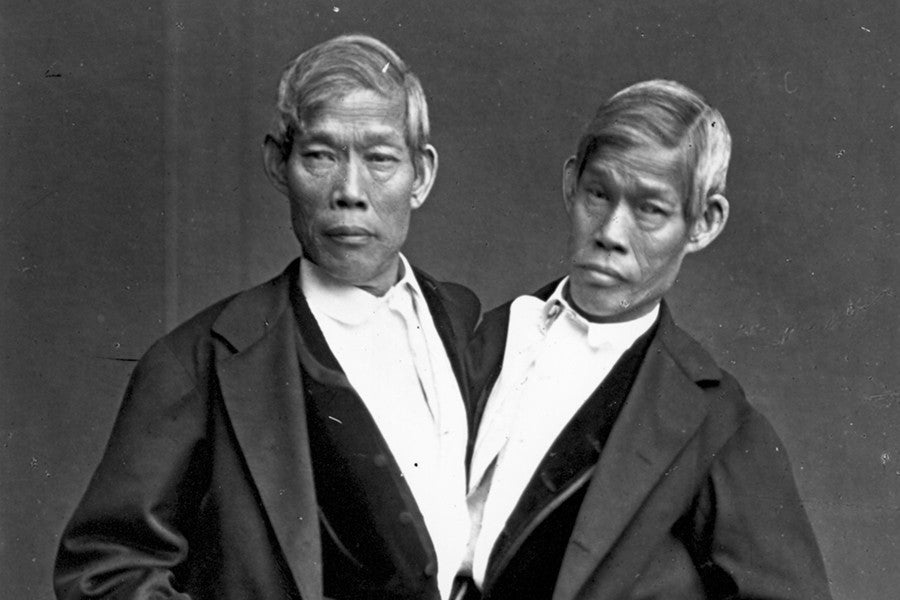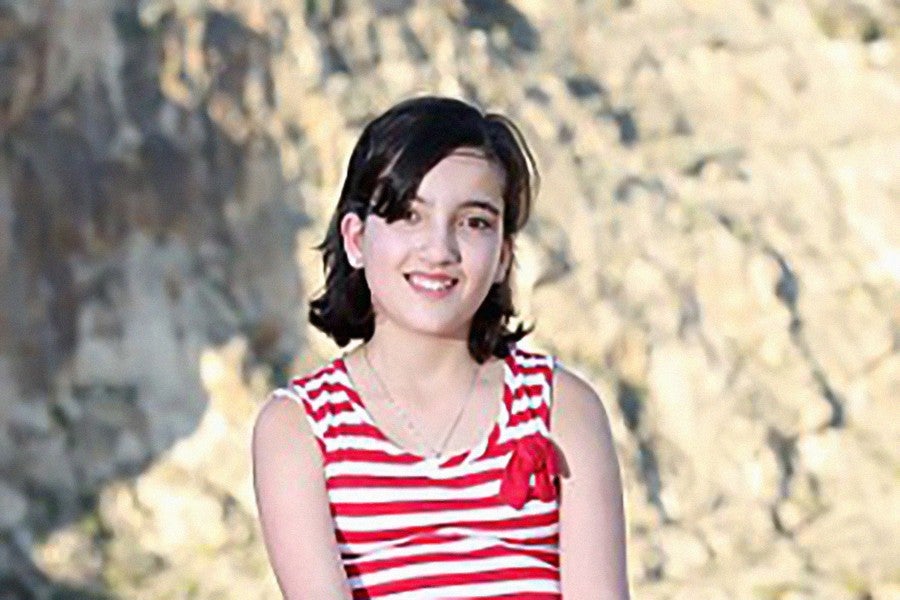“Free at Last.”
That was the headline of a November 1993 New York magazine story featuring a photograph of infant twins Carmen and Rosa Taveras, several months after being surgically separated at 2 months old.
They’d been born fused together, pelvis to pelvis — Carmen’s head pointing one direction, Rosa’s the other — and doctors were convinced they’d never sit, stand, walk or lead normal lives.
And yet, as historian Alice Domurat Dreger explains in the introduction of her 2004 book One of Us: Conjoined Twins and the Future of Normal, the headline “Free at Last” doesn’t make much sense to people who are conjoined, since most of them don’t feel the slightest bit entrapped. “They don’t wish they had been born into ‘singleton’ bodies,” Dreger writes, referring to those born with no anatomical bond to anyone but their mother’s.
In fact, it wasn’t until 2003 that adult conjoined twins (29-year-old Laleh and Ladan Bijani) consented to separation surgery. (Hundreds of such surgeries had been performed previously — none with the consent of the patient, in large part because most of these patients were too young to give it.) The attempt to separate the Bijanis failed, however, when it was discovered the twins shared a major hidden vein. There was significant blood loss during the procedure, and the two died within 90 minutes of each other.
Dreger’s central thesis is that “independence” for conjoined twins doesn’t equate to “separation.” They typically feel their bodies and lives are perfectly normal and acceptable — sometimes even preferable. Like most people, they readily accept the anatomy with which they were born. “The desire to remain together is so widespread among conjoined twins as to be practically universal,” she concludes.
Still, as Dreger explains, “conjoinment is especially challenging in the U.S. because American culture equates individualism with independence, and interdependence with weakness.” Even within this context, though, conjoined Americans don’t think they need a discrete body to achieve independent status any more than another person needs to grow their own food or sew their own clothes to count as an independent individual. “In my own experience,” Dreger writes, “the people who complain the most [about the inability to find independence] are present-day Californians living in the Midwest.”
Here are four other things I learned from Dreger about what it means to be “independent” despite sharing a body…

They have sex like everyone else (while their twin does their best to ignore them).
Dreger says conjoined twins do what most people do: Seek out a lover, find a little privacy and bone — doing their best to make it feel like a one-on-one affair. “The other twin is right there, of course, but those who have shared details of their sex lives report the other twin remains quiet and mentally distant,” she writes. The original Hilton Sisters — Daisy and Violet — were literally attached at the hip in the 1920s. This didn’t get in the way of their sex lives, though. Their old friend, magician Harry Houdini, taught the twins how to retract their minds so that one wouldn’t be bothered while the other was having sex. They also had a special phone booth installed in their home that allowed one twin to talk intimately with a lover without the other hearing.

The original “Siamese twins” took turns being the “master” and living at each other’s house.
Chang and Eng Bunker were born in Siam (now Thailand) in 1811. Dreger writes that by all accounts they remained close and enjoyed each other’s company, even as old men. They loved to travel, and because of their conjoinment and the monetary rewards it brought them through performing, they had the freedom to leave their tiny hometown near Bangkok and criss-cross the world.
In 1843, Chang married Adelaide Yates and Eng married her sister, Sallie; the two were daughters of a clergyman. Adding to their congeniality, Dreger notes, the brothers agreed that each should, in turn, control the action of each other. For a set number of days, for example, Eng would be complete master: They would live at his house, and Chang would submit to Eng’s every will and desire. Then they would do the opposite at Chang’s house. Eng and Sallie eventually had 12 children; Chang and Adelaide had 10.

When conjoined twin brothers are born sharing genitalia, one of them becomes a sister.
To this day, the medical field persists in giving one boy male genitalia and turning the other into a “girl” by forming female-looking genitalia and flooding the boy with estrogen. Lin and Win Htut, for example, spent two and a half years as conjoined male twins before surgeons gave Lin the one available penis and “reconstructed” Win as a girl. In another case, the child who was given the male genitalia died from the operation whereas his “sister” survived; the parents, who had come to the hospital with two toddler-aged sons, left with one daughter. Dreger notes in her book that “such a scenario is considered less psychologically risky and more conducive to healthy, independent sexual functioning than a life of genital conjoinment,” though medical literature on the subject is limited.
Sometimes independence means dying so your twin may live.
When it’s likely that both children will die if left intact but one might live if separated, parents are faced with a Sophie’s Choice-like dilemma known as a “sacrifice surgery” in which doctors allow one twin to die and harvest durable parts — organs, skin, bones and anything else surgeons need — to construct one viable child.
Gracie Attard, for example, was born joined to her sister Rosie at the abdomen and spine. Their parents, devout Catholics, were unwilling to sacrifice one 3-month-old daughter to save the other and were sued by the attending physicians, who were “disturbed by the thought of Gracie dying when she had every chance, in their opinion, to live a normal life if separated,” Dreger writes. The physicians eventually won, and Gracie was reconstructed while Rosie was sacrificed.

In 2014, Gracie, now a teenager, shared her thoughts on the whole experience with the Daily Mail: “Sometimes when I need someone to help me, say when I’m taking an exam, I’ll say in my head: ‘Help me, my little sister.’ Because that’s what sisters do. They help each other, don’t they?”

